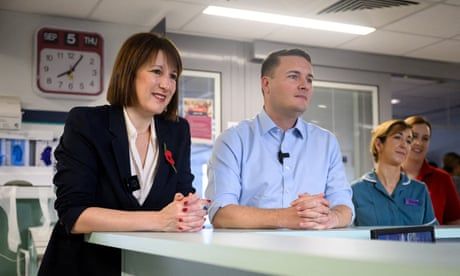
There is no need to panic: the government’s overall fiscal strategy is the right one. Spending cuts would be a mistake
The cost of UK government borrowing is higher than it has been since just before the global financial crisis of 2008. The yield on 10-year gilts – the interest rate the government is paying on the £4.25bn it borrowed today to finance the deficit – is about 4.5%, nearly five times what it was a decade ago, and higher than at any time during the Liz Truss meltdown.
So have the so-called bond vigilantes come after Rachel Reeves, selling off their holdings of government bonds en masse as they did after Truss and Kwasi Kwarteng’s budget? Not really. The Truss debacle was the consequence of a toxic cocktail of irresponsible tax cuts, institutional vandalism and a near-death spiral in an obscure part of the pensions market, all of which were UK-specific. By contrast, since the start of 2023, UK long-term interest rates have broadly followed US ones upwards. While part of this reflects the fact that UK inflation has been somewhat more persistent than the Bank of England hoped, it is mostly driven by global developments, and especially those in the US, where growth and inflation are somewhat higher than expected. It’s this, far more than anything the new UK government has done, that has driven the rise in borrowing costs.
Jonathan Portes is professor of economics and public policy at King’s College London and a former senior civil servant
Continue reading...